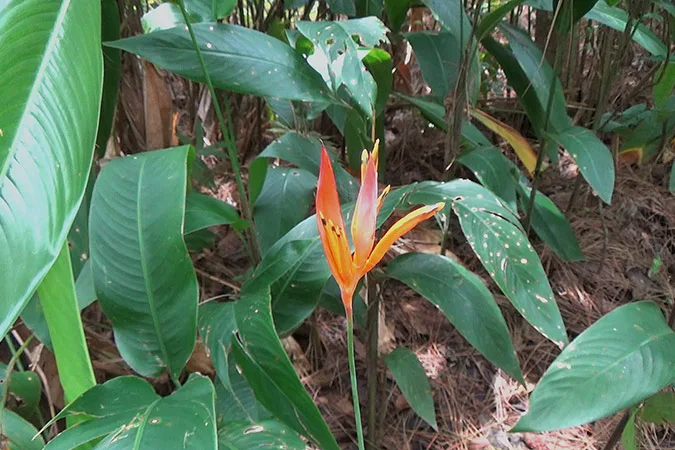Parrot's beak (Heliconia psittacorum) is a species of plant in the Heliconiaceae, perennial herb forming a dense, erect, up to 2 meters tall shrub, hermaphrodite angiosperm, male parts are the anthers, female parts are stigma and pistil, often cultivated as a tropical ornamental plant.
H. psittacorum has a blackish green underside, middle and top bases are green. The leaves have long stalks, cylindrical, slender, dark green, erect or to the side and horizontal strands.
The leaf blade is oblong in shape, pointed tip, a vein in the middle forming a trench, wavy surface, flat margin, dark green upper side and pale green underside.
The flowers at the end of the stalk are long, cylindrical, slender, erect, up to 1 meter high and green. Flowers are spathe and calix, red or yellow or white with black.
Kingdom: Plantae
Phylum: Tracheophyta
Subphylum: Angiospermae
Class: Liliopsida
Order: Zingiberales
Family: Heliconiaceae
Genus: Heliconia
Species: Heliconia psittacorum
H. psittacorum has a blackish green underside, middle and top bases are green. The leaves have long stalks, cylindrical, slender, dark green, erect or to the side and horizontal strands.
The leaf blade is oblong in shape, pointed tip, a vein in the middle forming a trench, wavy surface, flat margin, dark green upper side and pale green underside.
The flowers at the end of the stalk are long, cylindrical, slender, erect, up to 1 meter high and green. Flowers are spathe and calix, red or yellow or white with black.
Kingdom: Plantae
Phylum: Tracheophyta
Subphylum: Angiospermae
Class: Liliopsida
Order: Zingiberales
Family: Heliconiaceae
Genus: Heliconia
Species: Heliconia psittacorum
